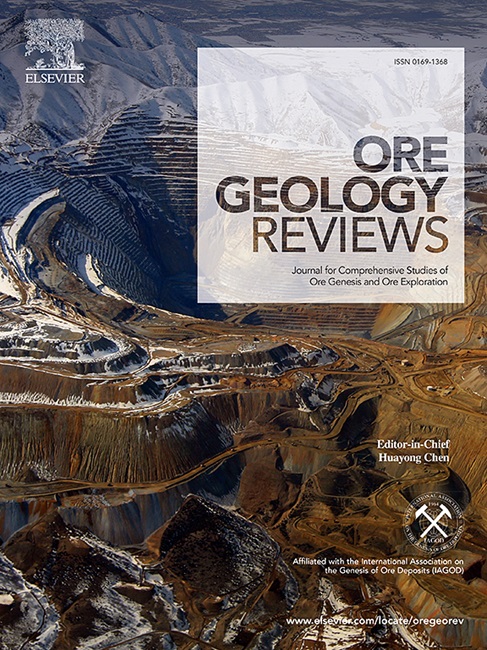Mineral prospectivity mapping of orogenic gold mineralization in the Malartic-Val-d’Or Transect area, Metal Earth project, Canada
IF 3.2
2区 地球科学
Q1 GEOLOGY
引用次数: 0
Abstract
Mineral Prospectivity Mapping has been applied to define exploration targets for orogenic gold mineralization in the world-class Malartic-Val-d’Or area (Quebec) of the Abitibi greenstone belt, a region that contributes significantly to Canada’s annual gold production. This research utilizes lithological, geophysical, and structural data from the Malartic transect, collected as part of the Metal Earth project, to investigate factors controlling gold distribution in the region. Stepwise logistic regression and random forest algorithms were employed to map mineral prospectivity for gold potential. The overall accuracy indicates that the random forest method has outperformed logistic regression, although the latter produced an acceptable model. This conclusion is supported by the classification accuracy validated using an independent Au occurrence database and the performance metrics generated by the random forest and logistic regression models. Crustal density, shear zones, and faults are strong predictors for distinguishing mineralized and non-mineralized locations, as identified by both Random Forest and Logistic Regression models. In the Malartic-Val-d’Or region, subvertical conductive anomalies revealed by magnetotelluric data align closely with major shear zones and crustal-scale structures, such as the Cadillac-Larder Lake deformation zone, which hosts significant gold deposits. These anomalies suggest a paleo-hydrothermal footprint of mineralizing fluids and highlight their critical role in the formation of orogenic gold deposits, a pattern also observed in other mining camps across the Superior craton. These results and associated mineral prospectivity maps are integral for greenfields exploration in the Malartic region and may offer valuable insights for mineral exploration in other greenstone belts of the Superior craton.

求助全文
约1分钟内获得全文
求助全文
来源期刊

Ore Geology Reviews
地学-地质学
CiteScore
6.50
自引率
27.30%
发文量
546
审稿时长
22.9 weeks
期刊介绍:
Ore Geology Reviews aims to familiarize all earth scientists with recent advances in a number of interconnected disciplines related to the study of, and search for, ore deposits. The reviews range from brief to longer contributions, but the journal preferentially publishes manuscripts that fill the niche between the commonly shorter journal articles and the comprehensive book coverages, and thus has a special appeal to many authors and readers.
 求助内容:
求助内容: 应助结果提醒方式:
应助结果提醒方式:


